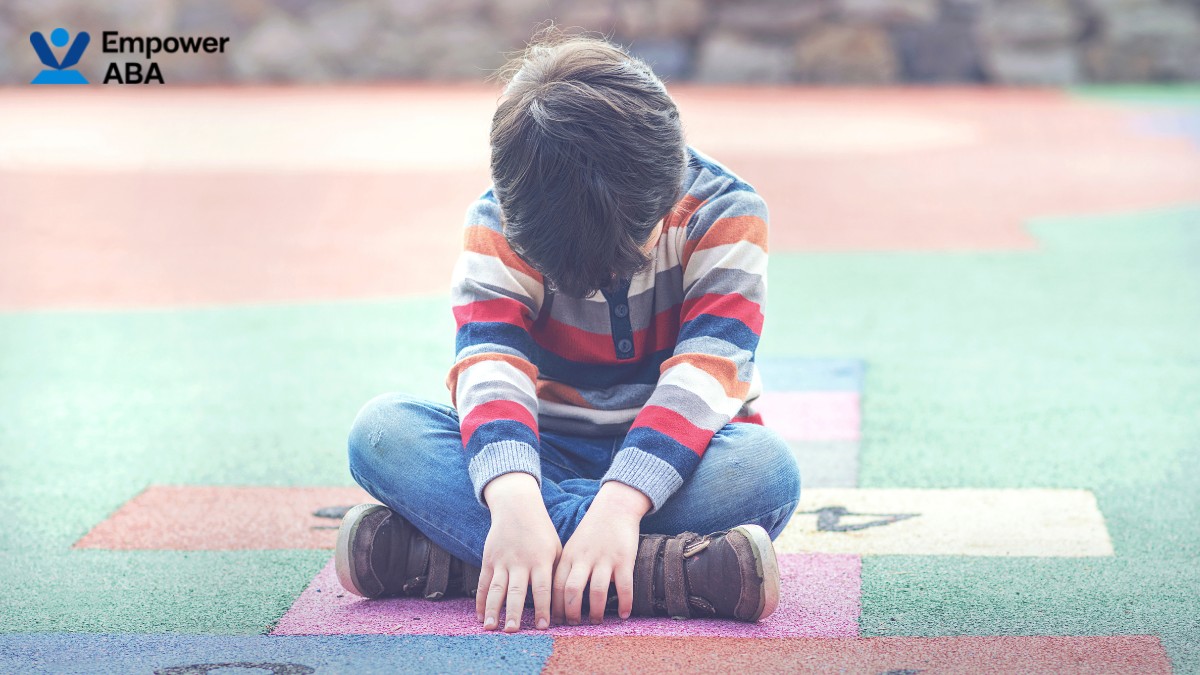Key Points:
- Autistic burnout and depression share some similar symptoms but have different causes and solutions.
- Autistic burnout is linked to long-term masking and sensory overload, while depression stems from clinical mental health factors.
- Understanding these differences can help parents support their child with the right strategies and care.
It’s not always easy to tell when something is wrong—especially when your child seems exhausted, withdrawn, or emotionally overwhelmed. For parents of autistic children, this often leads to a confusing question: Is it depression or something else? That “something else” might be autistic burnout, a condition that’s often misunderstood or mistaken for depression.
When comparing autism burnout vs depression, it’s essential to know that while the two can look similar, they have different roots and need different types of care. Understanding these key differences can make a world of difference in how parents respond, support, and advocate for their children.
Are Autistic Burnout and Depression the Same Thing?
No, autistic burnout and depression are not the same. While they share overlapping symptoms—like low energy, emotional shutdown, or isolation—their causes, experiences, and recovery paths are very different.
Let’s explore what each of these conditions looks like, how to tell them apart, and what parents can do when their child is struggling.

What is Autistic Burnout?
Autistic burnout is a state of physical, emotional, and mental exhaustion caused by the ongoing stress of trying to fit into a neurotypical world. It’s not a mental illness, but rather a response to long-term overload.
Common Causes of Autistic Burnout
In short, autistic burnout often results from:
- Masking behaviors: Trying to “pass” as non-autistic by hiding stims, forcing eye contact, or mimicking social behavior.
- Sensory overload: Constantly managing bright lights, loud sounds, or crowded environments.
- Emotional suppression: Feeling misunderstood and holding in emotions for long periods.
- Unmet needs: Lack of proper accommodations, downtime, or support.
Burnout tends to build slowly over time, often after months or years of pushing through challenges without enough rest or self-expression.
6 Signs of Autistic Burnout
While every person is different, many individuals experiencing autistic burnout may show:
- Sudden loss of skills (speech, self-care, academic tasks)
- Extreme exhaustion, both mental and physical
- Heightened sensitivity to sound, touch, or light
- Increased meltdowns or shutdowns
- Feeling detached or “numbed out”
- Social withdrawal, even from family
What’s important to know is that autistic burnout is not a failure. It’s the body and mind asking—begging—for rest and safety.

What is Depression?
Depression is a medical condition that affects how a person feels, thinks, and behaves. It’s not unique to autistic individuals, though they may experience it at higher rates due to social isolation or trauma.
Causes of Depression in Children and Teens
Depression in autistic individuals can stem from:
- Genetic predisposition
- Negative experiences (bullying, rejection, or trauma)
- Low self-esteem and chronic stress
- Loneliness or lack of connection
Unlike autistic burnout, depression isn’t always directly linked to masking or sensory overwhelm. It can occur even in supportive, low-stress environments.
6 Signs of Depression
Signs of depression in children and teens may include:
- Persistent sadness or hopelessness
- Loss of interest in favorite activities
- Changes in appetite or sleep
- Irritability or restlessness
- Difficulty concentrating
- Feelings of worthlessness or guilt
Depression can last weeks or longer and often needs therapeutic or medication support for improvement.
Autism Burnout vs Depression: Key Differences
When comparing autism burnout vs depression, it’s helpful to look at how they differ in origin, symptoms, and recovery needs.
Here’s how parents can start to tell them apart:
Cause
- Burnout: Comes from long-term masking, stress, and sensory overload.
- Depression: Linked to mental health conditions, genetics, or trauma.
Timing
- Burnout: Often follows high-demand periods like school changes or social strain.
- Depression: May come without a clear trigger and last longer without fluctuation.
Emotion
- Burnout: May involve numbness or emotional shutdown rather than sadness.
- Depression: Often involves deep sadness, hopelessness, or self-criticism.
Energy Levels
- Burnout: Total exhaustion and sensory sensitivity.
- Depression: Fatigue, but not always linked to sensory issues.
Recovery
- Burnout: Improves with rest, reduced demands, and sensory-safe environments.
- Depression: May require therapy, medication, and ongoing mental health support.
Both conditions can overlap—meaning a child may experience burnout and depression. That’s why a clear understanding and careful observation matter so much.
Supporting a Child with Autistic Burnout
Parents and caregivers play a powerful role in helping their child recover from burnout. It starts by creating space to rest and removing pressure to “push through.”
When your child is experiencing autistic burnout, try the following:
- Reduce sensory input: Offer noise-canceling headphones, dim lighting, or quiet time.
- Lower social demands: Allow breaks from school, therapy, or social events.
- Offer unstructured time: Let them stim, rest, or engage in comforting routines.
- Use visual supports: Burnout may reduce communication—try visual schedules or emotion charts.
- Validate their feelings: Remind them it’s okay to rest and they’re not broken.
With patience and compassion, many autistic individuals bounce back after burnout—especially when their needs are recognized and respected.
When to Seek Help for Depression
While burnout typically improves with rest, depression can deepen over time without proper care. Knowing when to seek outside help is critical.
Consider talking to a healthcare provider if your child:
- Talks about not wanting to live or expresses suicidal thoughts
- Shows no interest in once-loved activities
- Has trouble eating, sleeping, or functioning daily
- Withdraws completely from all connections
A mental health professional can help assess whether it’s depression, burnout, or both—and guide your family toward support that fits.
Why Understanding the Difference Matters
Distinguishing between autistic burnout and depression helps prevent misdiagnosis and ineffective treatment. For example, pushing a burned-out child to “snap out of it” can make things worse. On the other hand, dismissing signs of depression as “just a phase” may delay life-changing help.
When parents understand these differences, they’re better equipped to:
- Advocate for school accommodations
- Communicate effectively with doctors or therapists
- Build supportive routines at home
- Prevent future burnout by recognizing early signs
Knowledge is power—and compassion is everything.
Empower ABA: Helping Families Build Resilience and Support
Navigating autism—especially through challenges like burnout or emotional stress—can be overwhelming. You don’t have to do it alone.
At Empower ABA, we provide compassionate, personalized ABA therapy in New York, New Jersey, and Virginia. Our experienced therapists support children in developing life skills, communication, and coping tools—while respecting their unique strengths and needs.
ABA therapy can play a valuable role in managing stress, building confidence, and preventing emotional overwhelm. Through structured routines, positive reinforcement, and play-based strategies, children can gain skills to better manage the world around them—and within them.
Reach out to us today to learn how we can support your child through growth, setbacks, and everything in between.

